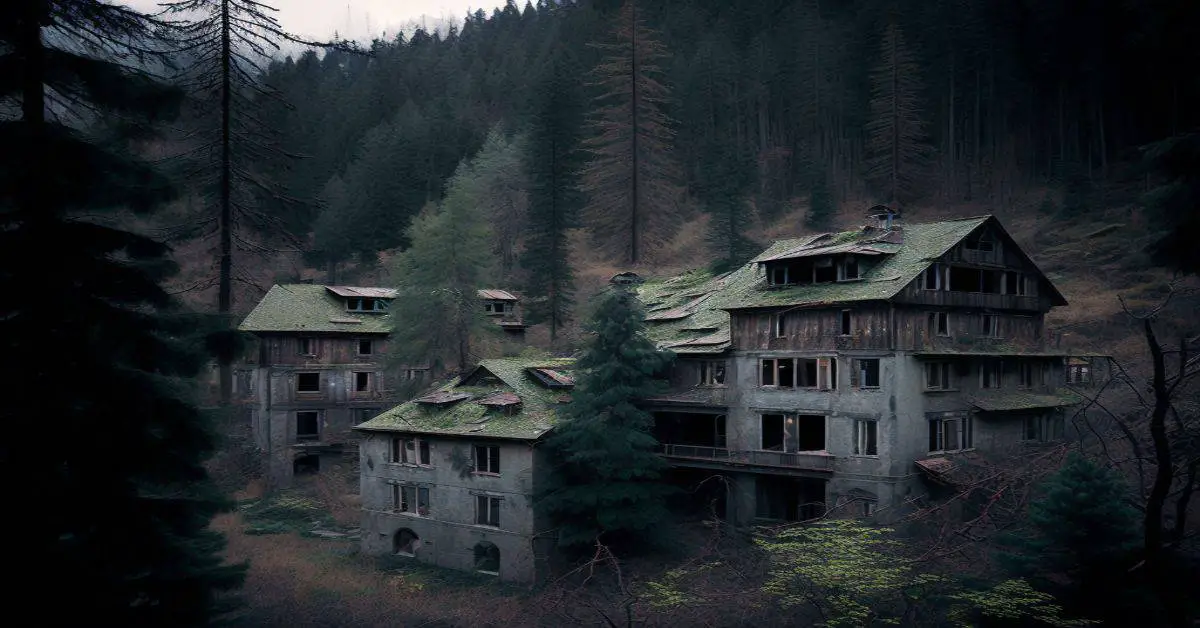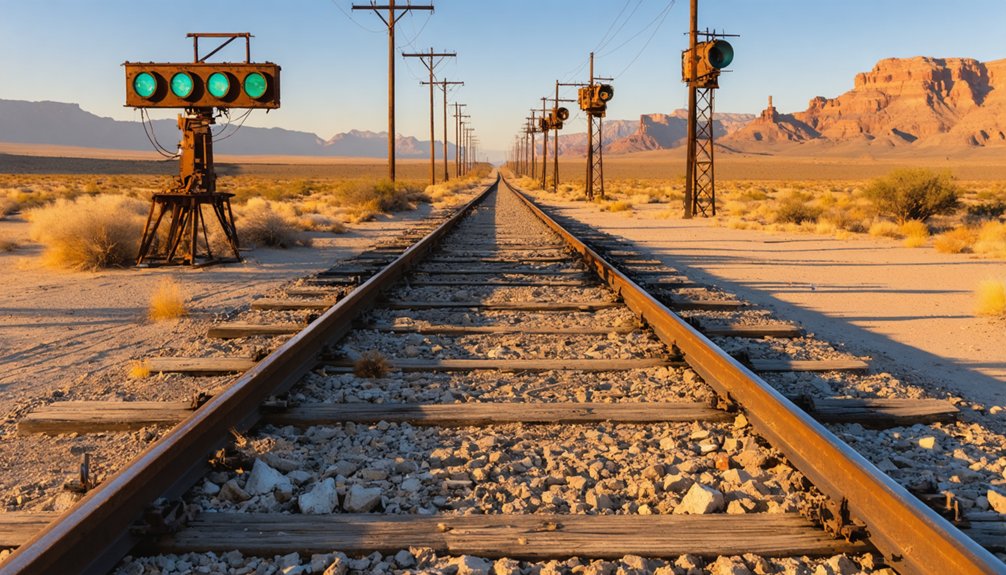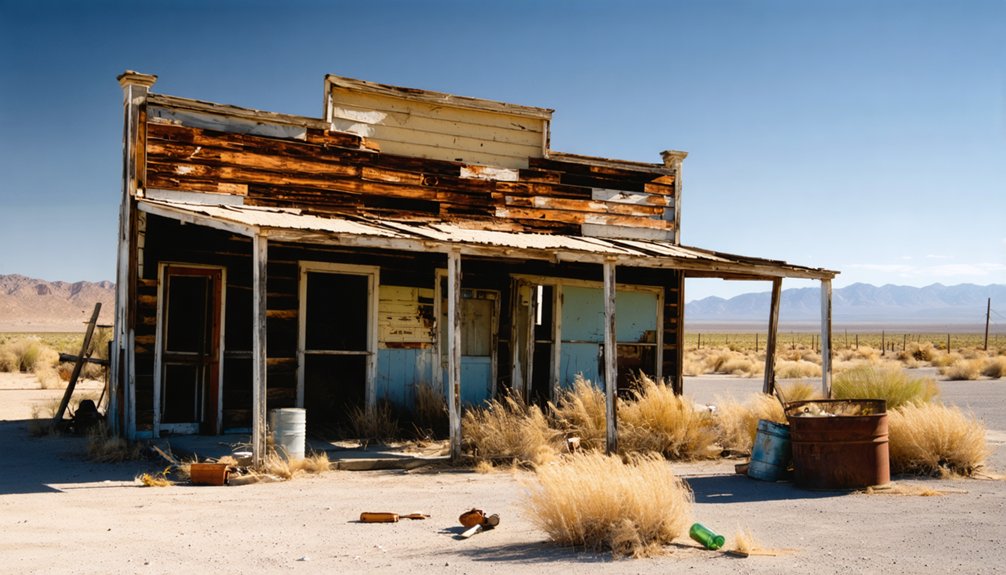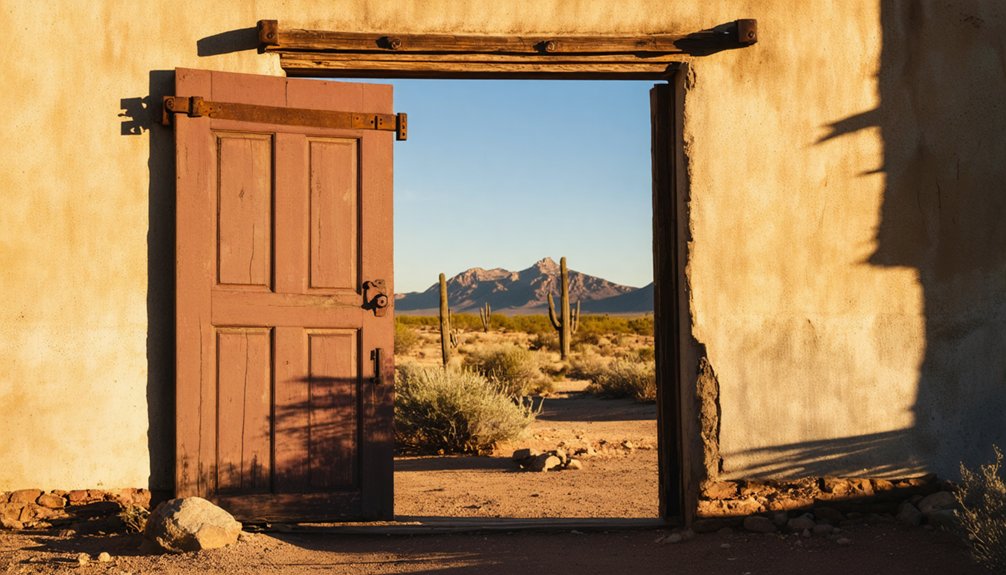Arizona was the 48th state to join the United States on February 14, 1912.
There are 300 ghost towns in Arizona. Most are barren and lost to the land, only to become part of the scenery.
Arizona was the last territory to become a state within the physical boundaries of the present-day United States of America. Alaska and Hawaii were the last of the 50 states to join the union, but they are the only two states that do not connect to other states.
Arizona was part of Spanish and Mexican territories before it was given up to the U.S. in 1848 through the Treaty of Guadalupe Hidalgo. Charles D. Poston led the first exploration of Arizona in 1853 after the Gadsden Purchase.
Canyon Diablo, Arizona
Canyon Diablo, Arizona, was founded in 1880 in Coconino County. The town was located 12 miles northwest of Meteor Crater. Being the closest community to the crater when meteorite pieces were removed, the meteorite was named the Canyon Diablo Meteorite.
The settlement of the town was not a planned event. Construction delays of the Atlantic and Pacific Railroad resulted in a prolonged stay and a half put together the community. A bridge the railroad had ordered to cross the canyon was discovered to be too short to span the entire distance needed to connect on both sides, and a new bridge had to be ordered. It took approximately six months for the new bridge to be constructed, with the right dimensions, and sent to the canyon’s worksite.
While waiting for the new bridge to arrive, other work on the railroad continued. The pillars the bridge was to be mounted on were excavated from Kaibab Limestone and shaped by stonemasons. Other railroad crews were sent ahead to survey the track route on the other side of the canyon.
Other orders included preparing the grade and bed, cutting and pre-staging railroad ties, and having additional supplies ready and in place for the iron rails on the train once it could cross the canyon. Three years later, in August 1883, the Atlantic and Pacific Railroad linked up with the Southern Pacific Railroad in Needles, California.
Before becoming the town of Canyon Diablo, it was nothing more than a small mobile community of businesses to support the railroad workers’ needs. When the organization became stuck at the canyon, the small town was established and quickly grew to include many dance halls, gambling houses, brothels, and saloons.
The town residents were primarily railroad workers, but occasional outlaws, gamblers, and prostitutes would settle or stay for a while. No legal authorities were in charge of the town, so danger escalated rapidly.
Set up like an old western movie; the town had two rows of businesses that faced each other with a street down the middle. Typically, the road would be known as Main Street, but for Canyon Diablo, it was referred to as Hell Street.
Along with dance halls, brothels, saloons, and gambling houses, Hell Street also had a dry goods store, a grocery store, and eating counters. Several tents, shacks, and shotgun-style houses scattered through the town area in a disorganized fashion to serve as residences for nearly 2,000.
A stagecoach route was developed from Flagstaff to Canyon Diablo but was often robbed in transit. When the town received its first marshal, he was sworn in at 3:00 pm and buried that night. Five other marshals would suffer similarly.
The longest marshal to oversee the town was one month before being killed. A cemetery was erected at the end of the town and had over 35 graves for victims of violent death. Only one grave for a trading post owner was known to be a nonviolent death. The trading post owner, Herman Wolfe, died in an area 12 miles north but was buried in Canyon Diablo.
After the completion of the railroad bridge, the town started to die. Most of the men working with the railroad moved on to finish other projects and abandoned Canyon Diablo. In 1900, the original bridge needed to be replaced to carry heavier train cars.
By 1903, all that was left of the town was a Navajo trading post. A double-track bridge was installed to cross the canyon in 1947. All that is left today are ruins of the trading post, the double-track bridge, some building foundations, and the grave marker of Herman Wolfe.
Contention City, Arizona
Contention City, Arizona, starts with a feud between three prospectors over silver and mining claims. When some mules owned by Ed Williams and Jack Friday snuck away from camp to find water, the chains they drug behind them revealed something shiny that ended up being silver. The mules were tracked to a nearby camp that belonged to Ed Schieffelin, a prospector working the area with claims too many of the Tombstone mines.
Schieffelin was not happy to learn Williams and Friday had found silver on his territory and used his claim to dispute ownership of the findings. Eventually, the claim was split into two territories: an upper end and a lower end. Williams and Friday took the upper end, leaving the lower end to Schieffelin. Schieffelin’s Contention Mine was named after the claim that had been disputed. Contention City, named after the mine, was established in 1879.
Contention City developed along the San Pedro Riverbank and served as a milling site for the silver found in the Tombstone, Contention, and Central mines. In the city, Sunset and Contention, two mills processed the silver ore into a fine powder in preparation for smelting, using heat to extract the metal base. The Grand Central Mill was two miles south of the city due to a lack of water.
Within a few months, Contention City saw a growth spurt of over 100 people, with even more fast-selling lots still available. A post office opened in April of 1880, followed by John McDermott’s saloon, the Western Hotel, a blacksmith, Chinese laundry, general stores, a butcher, and a stop for the stage lines between them Tombstone and Tucson.
In 1882, a railroad depot extended the New Mexico and Arizona Railroad to connect Benson, Fairbank, and Nogales. An 1880 census documented a population of 150 and 200 in 1884.
Contention City was further put on the map when Ike Clanton tried to have Wyatt Earp and Doc Holliday sentenced in the city when a grand jury in Tombstone failed to indict the men following the Spicer Hearing over the gunfight at O.K. Corral. First-degree murder charges were brought against brothers Wyatt, Vigil, Morgan Earp, and John “Doc” Holliday.
The grand jury believed the hearing’s purpose was to determine if there was enough evidence to hold the defendants for a jury trial. Still, the attorneys presented as if it was the conviction trial to avoid early dismissal of the case, steer clear of pro-cowboy or pro-political jurors, and hopefully call-in witnesses before any were mysteriously lost in transit or died from the roughness of pioneer life. No trial was held in Contention City for the Earp brothers and Holliday.
The city began a steady decline as the prices of silver started to drop. Whether stage line or railway, stopping in Contention City became unnecessary when a new depot was established four miles south in Fairbank, closer to Tombstone.
New water discovery in Tombstone meant more mills to serve the mines better than the ones in Contention. A flood in Contention Mine in 1886 and an earthquake one year later in 1887 forced the mine to cease operations. The post office closed in 1888, and the town was abandoned by 1890.
Contention City’s only remains are fence posts, a small cemetery, cellar holes, and portions of adobe walls. The area where the city was established is now part of the San Pedro Riparian National Conservation Area maintained by the Bureau of Land Management.
Sasco, Arizona
Sasco, Arizona, was officially founded in 1907 around a company town with a large smelter. Sasco is an acronym for Southern Arizona Smelter Company. The Development Company of America (DCA), headed by Frank Murphy at the time, believed in consolidating various mines, processing companies, and railroad companies in the area to operate under one name instead of several smaller ones.
It was thought that a large mine employing hundreds of workers would be much more beneficial to everyone involved than having many smaller mines with fewer men working each mine. The idea was ahead of its time in the early 1900s.
In 1903, Murphy put the idea to work by purchasing the Union Mine and Mammoth Mine in the Silver Bell Mountains. Murphy and his chief engineer, William Staunton, combined the mines and created the Imperial Copper Company and the Silver Bell Mine.
DCA built the Arizona Southern Railroad within a year to connect the Silver Bell Mine with the Southern Pacific Railroad. The next step was to create a large enough smelter and develop a town that would bring families and individuals looking for work.
Sasco was formed in August 1906, but after unexpected financial issues, smelter construction was not started until the summer of 1907 and finally completed in February 1908. Once the smelter was finished, attention was devoted to the town to attract workers. The town quickly reached a population of 600 people. By 1910, the Sasco smelter employed 175 men and had processed 245,000 tons of copper ore.
Some general stores and saloons had been built in the town, and a large brick home known as “the big house” served as an unofficial town center. Murphy’s idea of one large mine, processors, and railways operating under one name was honorable, but it also led to a forced bankruptcy filing on Murphy’s behalf.
The Sasco smelter was closed for the first time in 1911. In 1915, A company from Tucson took over the Silver Bell Mine and reopened the Sasco smelter. The town was temporarily saved until the Spanish flu hit in 1918 and 1919 and wiped out most of the population.
Silver Bell Mine closed in 1921. In 1933, most of Sasco’s buildings and the railroad were demolished. However, some ruins, including structures, a cemetery, broken glass, and rusted cans, can still be seen today.



